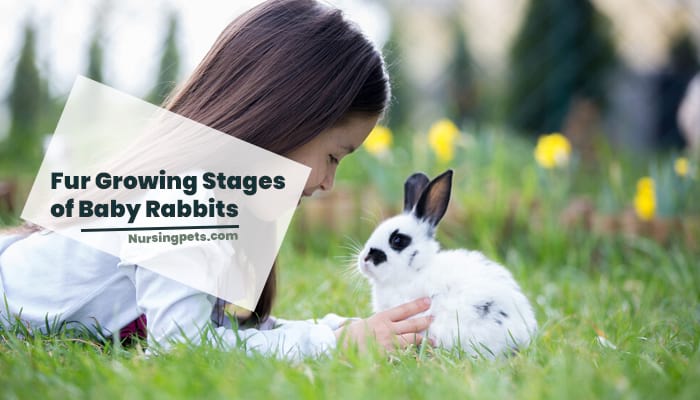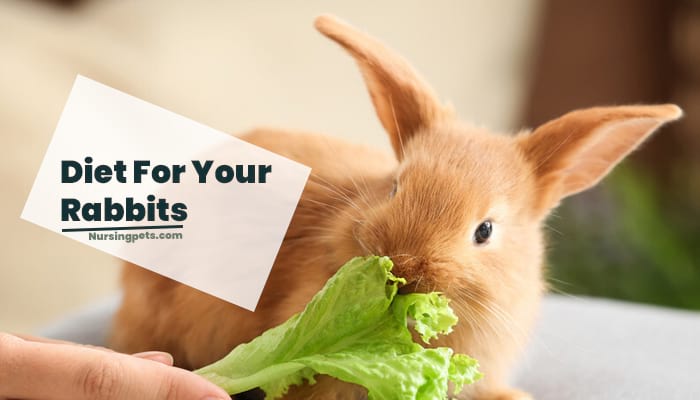When Do Baby Rabbits Get Fur? Bunny Lovers Guide
Newborn bunnies are famous for being fluffy and cute. But they are born blind, helpless, naked, and without any fur. Over time they will have fur, though. However, you might be thinking how much time they require to grow as an adult. The question may also appear to your mind “when do baby rabbits get fur?”
For your information, most bunnies usually grow fur when they are seven days old. After twelve days from birth, these rabbits will have thicker fur covering their body. After covering with thicker fur for three to twelve months, they will slowly lose their soft baby fur. Then, they will grow the sleeker adult coat.
Not only that, but we’re now going to explain the ins and outs regarding the baby bunny, how they look, how they grow, what they eat, etc. So, let’s get straight into the topic.
Related Blog: Why Do Rabbits Run In Front Of Cars? [Read now]
Fur Growing Stages of Baby Rabbits

Handy Hint: To read more about rabbits, visit our other article about when do baby rabbits leave the nest box [Click here] and how long does it take to litter train a rabbit [Click here]
Baby bunnies tend to grow fast. You can notice them transforming daily. It has the sole purpose of the bunny’s fast-growing. The sooner they can see things and hear, the safer they will be and run from danger.
Some bunnies are born with the gift; they start growing fur when they are three days old. But this fur type usually doesn’t be so thick to keep them warm. During this growing phase, these bunnies spend the entire time in the nest box. And their mother shelters them by covering the nest with her shed fur.
When the rabbits lead the life for seven days, they will grow a soft coat. Mostly, it covers their belly, nose, ears, and feet. Slowly, these bunnies will develop a full coat by day twelve. At this time, their fur will be thicker, and they will open their eyes and ears.
After certain days, their fur will be different in color. It is a sign that their adult coat is coming in. Bunny’s fur starts to grow from the moment they are born, and it continues growing until these bunnies are four weeks old.
In the middle of four and six weeks, the babyfur will turn into the intermediate coat. It is the time when bunnies will leave the family group. Later on, their intermediate coat will grow thicker, and soon, the adult coat will appear. This incidence can take place anytime between four and twelve months of age.
The adult coat tends to be sleek, long, and more protective. Its appearance and texture may vary from breed to breed.
Now we will discuss interesting and adorable facts about the bunny’s behavior, aging, and diet. Let’s get started:
#. 1st Month:
As you know, bunnies are born with their ears and eyes closed and nearly have no fur. They entirely depend on the doe in their 1st month of life. After successfully breathing for seven days, their fur starts to grow.
When they are twelve days old, they begin to open their eyes and ears. At this time, the female rabbit nurses once or twice a day. When these baby rabbits are three weeks old, they start to feceate, and they eat caecotrophs. It may not sound very pleasant, but it is true.
Their feces are full of nutrients containing protein and vitamins, which are essential for those baby bunnies. By consuming the caecotrophs, bunnies get the required nutrients to stay healthy. Sooner, they will start to nibble at solid food when their age is between three and five weeks.
#. 2nd Month:
At this time, baby rabbits get out of the nest and start leading life independently. The 2nd month is considered a special time for both the bunnies and their owners.
During this time, bunnies start to make contact with humans and make bond. They learn various things and adapt to their specific habits.
#. 3rd Month:
When bunnies are three months old, it is high time for protection against Calicivirus. Owners need to take their bunnies to the vet to vaccinate them to protect them from the fatal Calicivirus.
Calicivirus is a prevalent virus that causes infection to the rabbit’s respiratory system. Rabbits become more prone to catch this virus when they hit puberty.
#. Four to Six Months:
At this point, you will notice some changes in your rabbit’s behavior. It is because bunnies mature sexually when their age is four months plus. At this point, you need to separate boy and girl rabbits. Plus, you should neuter both boys and girls.
Another noticeable fact is that your bunnies will be more likely to go here and there, and they are excellent at digging and escaping. Thus, you may install microchips, enabling permanent identification of your pet with your contact details.
#. Six to Twelve Months:
Rabbits are fully grown when their age is between six to twelve months. Usually, they reach their mature weight by ten months of age, though.
#. Diet Rabbit:

A good diet is essential for every pet, and when it comes to the rabbit, their diet needs to be superior. You should include 80% hay and 20% green veggies in their diet. Their hay should be full of high protein and calcium, which are essential nutrients for their growth. If needed, you may make them eat the growth pellets.
Lastly, rabbits grow fast, and so do their teeth. Their teeth growing range is somewhere between 3-4mm per week. For your information, inadequate wear of the teeth can lead to dental disease. Thus, you should take three to four dental appointments for your rabbits every month.
Frequently Asked Questions (FAQs)
1. Are baby bunnies born with fur?
Baby bunnies are usually born with no fur. However, when they are two weeks old, their fur grows in. With time, they develop their fur and become ready to leave their nests.
2. Can I Touch a Newborn Rabbit’s Fur?
Many people say that you touch baby rabbits means you have transferred your scent to them. That’s why the mother will reject them. However, this is a myth. Mother rabbits don’t leave their children due to human scent. So, you can touch a newborn rabbit’s fur without any hassle.
3. Why Is My Baby Rabbit Losing Its Fur?
Losing some hair every day is pretty usual for rabbits. However, if it happens excessively, it might be due to several causes, such as over-grooming, excessive scratching due to parasites, bacterial or fungal infections, illnesses, etc. If you notice that your rabbit shows any of these symptoms, consult a vet immediately.
Conclusion
Rabbits are social and friendly creatures. They love to hang out in a large group. They are easy to tame, and so they are loved by many pet enthusiasts. Today, people keep them in their priority as a pet. They love to nurture the bunny and spend playful time with them.
However, at the beginning of nurturing rabbits, some people find the task daunting and even tiresome. But with time, they manage to cope with the situation and start enjoying petting the rabbit.
We hope this article seems to you informative and helpful, and you also enjoy petting your rabbit.

